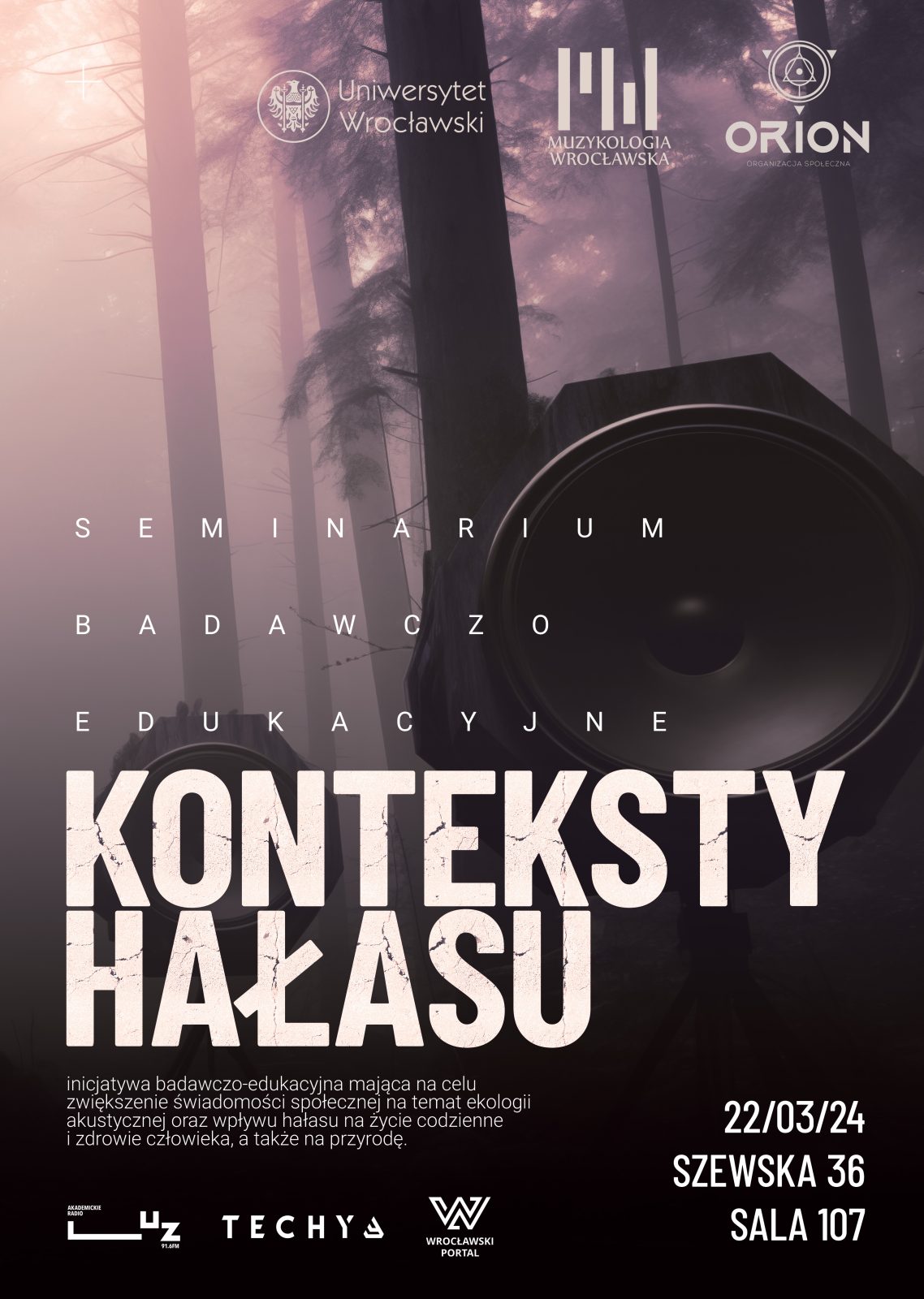
Between silence and noise. Research seminar at the UWr
This Friday, 22 March, the first in a series – the Research and Education Seminar entitled “Konteksty hałasu” (eng. Contexts of noise), which the Institute of Musicology organises with the ORION Foundation, will take place. Its aim is social education in the field of sound ecology, with particular emphasis on noise, which is interpreted not only as a phenomenon in the psycho-acoustic, but also social and cultural sphere.
What is sound ecology?
Dr Robert Losiak from the Department of Musical Anthropology at the Institute of Musicology in the Faculty of Historical and Pedagogical Sciences: – This can be used to describe both research and scientific activity, as well as activity in the social sphere, the subject of which is sound in the context of the environment. We may associate it colloquially with the so-called fight against noise, sound pollution. Strictly speaking, however, sound ecology is a reflection on the relationship between sound and the living environment, which can be referred to both the natural world and the life of human communities. In this perspective, the issue is not so much the absolute “fight against noise”, but rather working towards a sound balance in the environment and making the sound environment more sensible.
How has noise changed from what it was 20 years ago to what it is today?
Here one would have to start with the question of what noise is. If we were to adopt a (very simplistic) working definition of noise as a collection of excessively loud and unpleasant sounds, especially mechanical sounds, we can of course very easily indicate the changes that have taken place over the indicated period of time. However, the notion of change in this case does not necessarily mean an unambiguous deterioration of the sound environment in which humans live.
Can you provide an example?
On the one hand, new technical devices, not necessarily essential to life, such as lawnmowers or leaf blowers – generating very unpleasant and sometimes even harmful sounds – have appeared or become widespread over the past 20 years. On the other hand, we have examples of appliances that emit much less intrusive sounds, such as white goods or electric cars. In each case of such an analysis of change, attention should be paid not only to the device itself, but also to the ways in which it is used, which in many cases take on the meaning of certain social, customary norms.
How do we adapt to noise?
“Noises” change just as the whole sound environment changes. Some ‘noises’ arise, others disappear. In this sense, our life is a constant process of adaptation to new conditions. Since the human situation, in a sonic sense, plays out in a wide spectrum of events between relative silence and intense noise, both of these extremes in a sense seem to shape us. As is well known, sometimes we have a need to experience silence, other times we long for the intense sounds we associate with life and the presence of other people. It is important, it seems to me, to maintain a certain balance.
How important is the psycho-acoustic sphere for people?
I would change that phrase ‘psycho-acoustic realm’ into a question about the importance of the sound environment (audiosphere) for people. It is the environment that defines us, quite simply. When we hear or listen (and these are two different states) we are, firstly, present in the environment, able to locate ourselves and understand what is playing out next to us. This usually happens unconsciously. On the conscious level, on the other hand, sounds allow us to communicate with each other and are an important part of social and cultural bonds. They convey meanings and values, and can be symbols and messages of tradition.
In addition to the scientific community, representatives of local authorities as well as social organisations have announced their participation.
Free entry. We encourage you to participate!
Complied by Katarzyna Górowicz-Maćkiewicz



